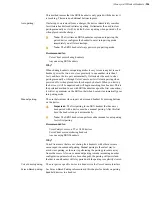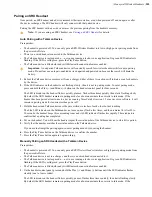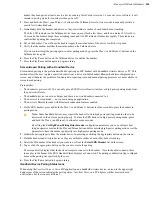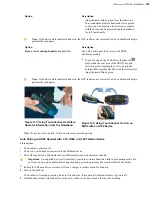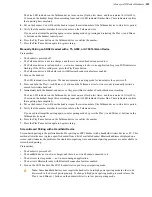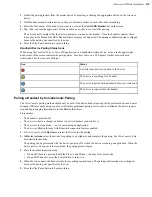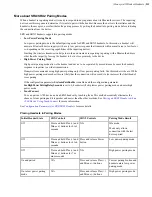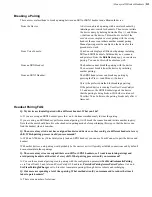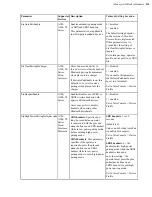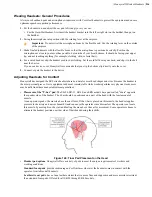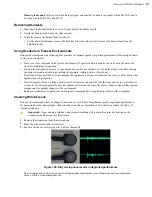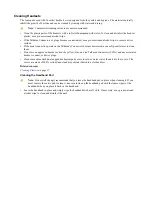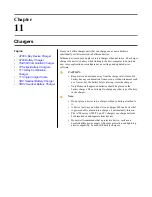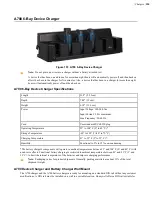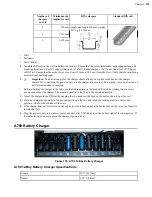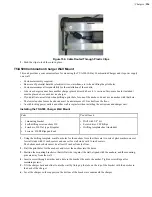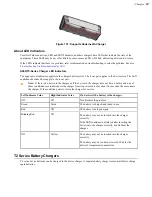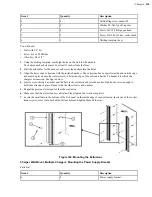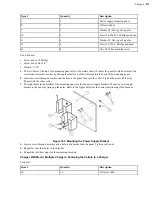
| Honeywell Wireless Headsets |
217
Memory foam pads
: offer superior cushioning support and comfort. Available in earpads for the SR-20/21 and in
t-bar pads for the SR-20/21 and SR-30.
Removing Headsets
1.
Disconnect the headset from the device. Do not pull on the headset's cord.
2.
Unclip the headset cord from your shirt or jacket.
3.
Carefully remove the headset from your head.
• For the Hard-Hat Headset, remove the hard hat. Press the release clip to remove the headset unit from the
hardhat bracket.
Using Headsets in Freezer Environments
Honeywell recommends the following best practices for optimal speech recognition performance when using headsets
in freezer environments.
• Train your voice templates in the freezer environment. If operators train templates in a quiet area, the noise of a
freezer could disrupt recognition.
• Position the microphone as close to your mouth as possible, but outside of your breath stream. It should be facing
your upper lip, and not touching anything (for example, clothing, skin, or facial hair).
• Keep windscreens dry. Water will not damage the equipment; however a windscreen can create a water barrier that
degrades speech recognition.
• Do not attempt to break ice from a windscreen. The pressure can grind ice into the foam and cause a water barrier
as it melts. Ice build-up generally does not degrade performance because Vocollect's Adaptive Speech Recognition
compensates for gradual changes in the environment.
• Replace a windscreen if liquid or ice on the foam is accompanied by significant problems with recognition.
Cleaning Windscreens
Honeywell recommends that you change windscreens every 90 days for optimum speech recognition performance.
By protecting headset microphones, windscreens prevent the accumulation of dirt which can reduce the clarity of
operator responses.
Important:
Soap, cleaning solutions, and vigorous washing will remove the protective coating on the
windscreen and decrease its effectiveness.
1.
Remove the windscreen from the microphone.
2.
Rinse the windscreen under warm water.
3.
Squeeze out the excess water and let it air dry thoroughly.
Figure 150: Dirty microphone results in degraded performance
The comparison shows how an unprotected microphone cannot make clear distinctions between speech and
silence, while a clean microphone can.
Summary of Contents for Vocollect
Page 1: ...Honeywell Vocollect Hardware Reference ...
Page 2: ......
Page 4: ......
Page 12: ......
Page 20: ......
Page 36: ......
Page 80: ......
Page 106: ......
Page 128: ......
Page 148: ......
Page 150: ......
Page 154: ... Honeywell Wired Headsets 154 ...
Page 166: ......
Page 287: ... Honeywell Regulatory Compliance 287 Japanese Compliance Brazilian Compliance ...
Page 308: ......
Page 316: ... Index 316 ...


